If you've ever wanted to learn how to use ginger therapeutically you're in luck. This article will reveal to you the benefits of ginger root, plus a variety of tips for using it. And, you'll even get some juice and tea recipes!
What is Ginger?
Ginger (Zingiber officinale) is a rhizome that comes from the same family as turmeric and cardamom.
It has a thick stem that grows underground and sprouts roots and shoots. Ginger plants can grow as high as three feet. After harvesting the ginger, it's washed and dried in the sun. Once dried, you can use it for cooking or therapeutic purposes.
Ginger has a volatile oil, gingerol that is responsible for ginger's pungent taste.
The Health Benefits of Ginger Root
1. Digestive Health
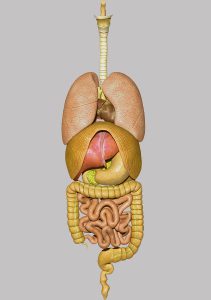 If you can't digest the food you eat, you cannot extract the nutrients from it. Ayurveda considers good digestion key to health… And ginger is best known for its effects on the digestive system.
If you can't digest the food you eat, you cannot extract the nutrients from it. Ayurveda considers good digestion key to health… And ginger is best known for its effects on the digestive system.
Studies have shown that ginger's active components help inhibit enzymes involved in blood sugar regulation and promote healthy gut bacteria.
Ayurveda's main focus is to establish a healthy digestive fire… And ginger kindles the digestive fire, Agni. It's pungent and warming which helps to stimulate the release of enzymes to break down food and empty the stomach.
According to Ayurveda ginger works on all three phases of gastrointestinal function:
- Digestion
- Absorption
- Elimination
2. Nausea
3. Respiratory Health
 Ginger is effective in treating respiratory problems like coughs, colds, asthma, and bronchitis. Ginger has a sharpness that's very effective at breaking up mucus from the throat and lungs.
Ginger is effective in treating respiratory problems like coughs, colds, asthma, and bronchitis. Ginger has a sharpness that's very effective at breaking up mucus from the throat and lungs. 4. Cardiovascular Health
 Ginger can be a diverse and powerful aid when it comes to cardiovascular health.
Ginger can be a diverse and powerful aid when it comes to cardiovascular health. 5. Treats Inflammation

6. Anti-Bacterial
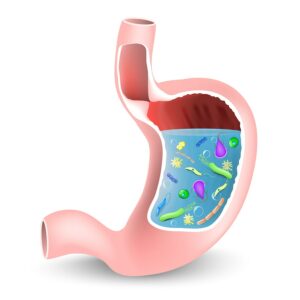 Ginger is an anti-bacterial and it has a positive effect on the bacterial population in the body.
Ginger is an anti-bacterial and it has a positive effect on the bacterial population in the body. Ways to Use Ginger
1. Eating Ginger Raw
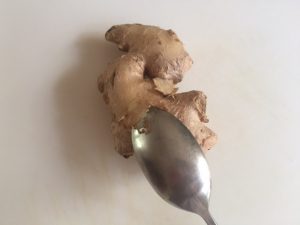 One easy way to peel it is to take a spoon and scrape the outer skin off the root until you have an appropriate amount of the fleshy material exposed. Then you are free to slice or grate whatever you need. Using ginger raw may be the best way to get all the good stuff into your body.
One easy way to peel it is to take a spoon and scrape the outer skin off the root until you have an appropriate amount of the fleshy material exposed. Then you are free to slice or grate whatever you need. Using ginger raw may be the best way to get all the good stuff into your body.2. Drinking Ginger Raw
3. Using Ginger Dry
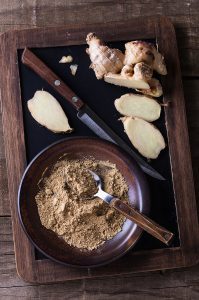 Another interesting way for you to use ginger is dried. You can even dehydrate it yourself, then grind into a powder and place it into capsules.
Another interesting way for you to use ginger is dried. You can even dehydrate it yourself, then grind into a powder and place it into capsules. Ginger Juice and Tea Recipes
Lemon Ginger Apple Juice
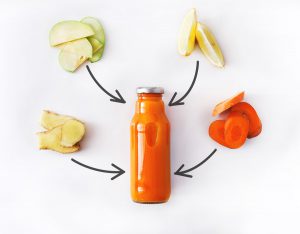
-
12 Carrots
-
12 Apples
-
6 x 1-inch Slices of Lemon (wax-free)
-
1 and a half Inches of Fresh Ginger
-
Ice
Ginger Beet Juice
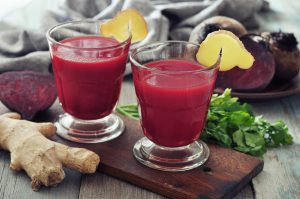
-
2 medium oranges, peeled and cut into sections
-
6 kale leaves
-
2 medium pears or apples, cut into sections
-
2 medium carrots, peeled
-
2 large beets, peeled and cut into wedges
-
2 1-inch pieces of peeled fresh ginger
Ginger Tea
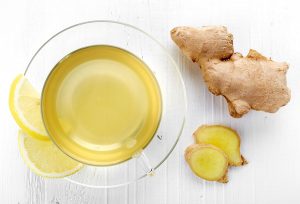
-
1 cup hot water
-
4 1/8-inch slices fresh ginger
-
1 small piece of fresh mint
-
1 strip of lemon peel
-
1/2 teaspoon of honey
Chai Tea
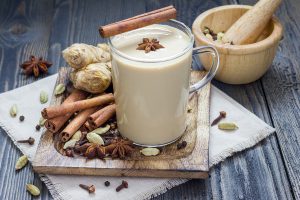
- 2 Cups water
- 2 Cups Milk (cow or nut)
- 1 TBS Black tea leaves
- 2 TBS ginger
- 1 tsp Green Cardamom seeds
- 1/8 teaspoon cinnamon
- 4 whole cloves
- 4 Black peppercorns
Remove the mixture from the heat as soon as bubbles start to rise
Stir in the tea leaves, sweetener, spices
Cover and allow to steep for a few minutes.
Strain and serve.
Serves 4
*Don’t let the tea leaves boil in the water/milk mixture too long. Other wise the tea becomes much more difficult to digest because the tannins are released from the tea.
How to Work With Fresh Ginger Root
Peeling Ginger
Mincing
Once cut into the thinnest slices, it will then be possible to cut them into very small cubes. The thinner the nickel slices, the smaller the mince.
A garlic press is also great for mincing ginger!
Slicing
Tips for Storing Fresh Ginger
Freezing
Soak It in Alcohol
Drying Ginger
You've just learned the many health benefits of ginger root. And that means that you can now use it to improve digestion, elimination, circulation and to prevent inflammation… Because as they say in India…
everything good is found in ginger!
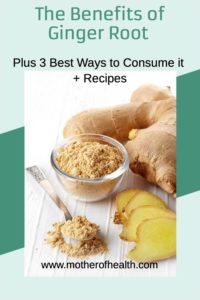
Don't forget to follow us on Pinterest. Thank you for your time and reading.

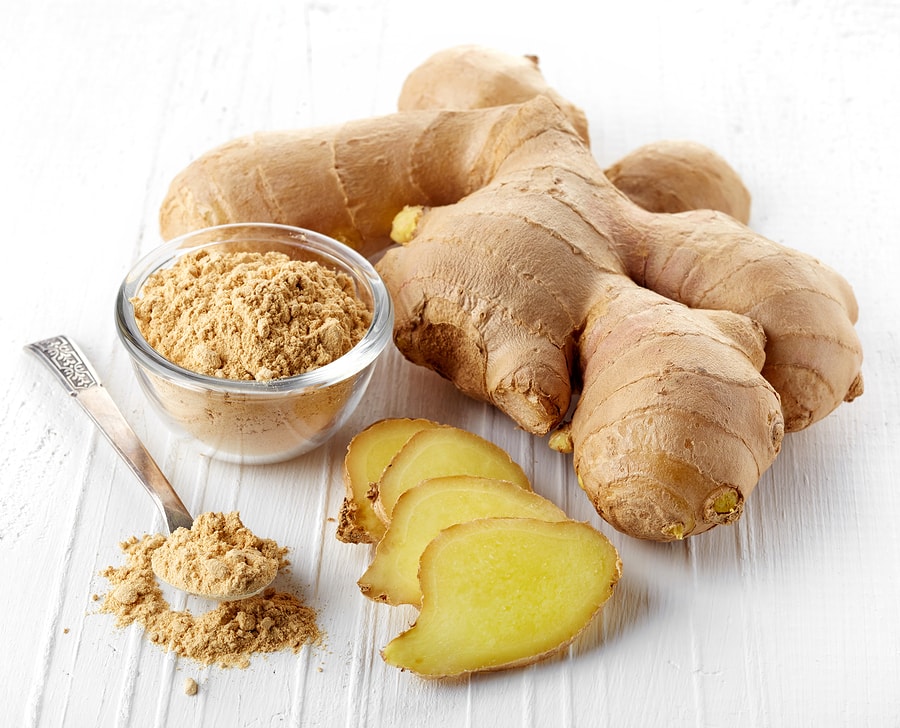

This is a really nice article! I enjoy ginger tea and lemon tremendously. The pungent scent of ginger wakes me while the lemon’s add a unique flavour that’s just so wonderful to consume.
But one of my problems is the preparation of ginger can take a long time (cutting, grating etc). I’ve worked around lemon by squeezing and storing the juice in a container. But how do you do that with ginger? Can we slice and store it for a quick use? Or can we make a ginger juice concentrate for tea later on?
Hi Isaac!
Yes, you could mince the ginger and freeze it. Then when you’re ready to make tea just pop a small chunk into your cup and pour over hot water. I actually do this all the time. The instruction for freezing ginger is in the post.
Hope this helps! 🙂
I never knew ginger had so many health benefits as you mentioned. Next time I have a cold I’ll make sure to include some ginger in my diet. I think what I want to try most is the lemon ginger apple juice that you mentioned. Thanks for sharing this information, I think it’ll be of benefit to those seeking to improve their health and diets!
Thanks for connecting Jeremy. The lemon-ginger-apple recipe is one of my favorites! I hope you like it too!
Will it help me for Fungus on the tongue
Will it help for Fungus on the tongue
Sure, go ahead and try it! It won’t hurt you to experiment. Ginger has antifungal and anti-inflammatory compounds which is why it’s recommended for a candida diet.